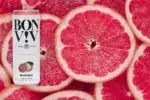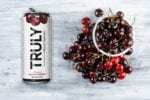The History of Seltzer Water

The History of Seltzer Water and its Surge in Popularity
Carbonated water was invented by Joseph Priestly in 1767. He discovered a way to infuse water with carbon dioxide by suspending a bowl or water above a beer vat at a brewery in Leeds, England.
The initial idea for carbonated water actually dates back to 1740 when William Brownrigg first conceived the idea. However, as that Brownrigg did not publish his findings, Priestly is largely regarded as the father of carbonated water.
Known today by such titles as soda water, sparkling water, fizzy water, and seltzer water, carbonated water contains small bubbles that give the liquid an effervescent quality.
Mineral water is in the same family as seltzer water, however as the name suggests, it contains such naturally occurring minerals as salts and sulfur compounds. Similar to mineral water, club soda is infused with potassium bicarbonate, potassium sulfate, potassium citrate, or sodium citrate through a manufacturing process.
The year 1781 saw the large-scale production of artificial mineral water, with the first carbonated water factory being built by Thomas Henry of Manchester, England.
In the United States, carbonated water was most commonly known as soda water until World War II. Called soda water due to the sodium salts it contained, the liquid was a choice beverage at soda fountains. Costing two cents, soda water was the cheapest drink you could get at a soda fountain. For another penny you could have your soda water flavored with syrup.
It was not until the 1950s that the terms sparkling water and seltzer water came into popularity. As noted in the article The Medical Origins of Seltzer that appeared in The Atlantic in December 2016, the term seltzer water is derived from the name of the German spa Niederselters, which is renowned for its natural mineral springs. Mineral water has been commercially bottled and sold from the region since the 18th Century.
While the name seltzer water stuck in the U.S., it has territorial names around the world such as “seltz suyu” in Turkey and “eau de seltz” in France.
In the United States, in the 1760s Native Americans believed that natural sparkling springs found in upstate New York had medicinal powers. During the revolutionary war, such springs were used for their healing powers on injured colonial soldiers.
In the early to mid-20th century, a sign of stature for the middle class was the soda siphon, also known as a seltzer bottle. Typically constructed of glass or metal, the devices allowed people to carbonate their flatwater or other nonbubbly drink in the comfort of their own home. Available commercially, the siphon came pre-charged with water and gas.
In the late Victorian era, a gasogene was the popular form of carbonating water at home. Also known as a gazogene or seltzogene, the device consisted of two glass orbs, the lower containing water and the upper a mixture of sodium bicarbonate and tartaric acid that react to create carbon dioxide. The glass orbs were typically surrounded by wicker or wire mesh as that the devices sometimes exploded.
A major breakthrough in the carbonated water industry was the invention of the Codd-neck bottle in 1872. The bottles were specially shaped with a pinched nose to allow a round marble like those children play with to seal in carbonation. Ironically few specimens of the era survived since children smashed the empty bottles to get the marble to play with.
Carbonated water, including mineral water, is defined by the USDA as a food with minimal nutritional value, even if minerals, vitamins, or artificial sweeteners have been added to it.
As we know from Priestly’s research and further manufacturing developments over the years, carbon dioxide gas dissolved in water at a low concentration results in carbonic acid. According to the book Modern Food Microbiology, this acid gives the carbonated water a tart taste. It carries a pH level of between 3 and 4, or roughly the acid content between apple juice and orange juice.
This relatively minor acidity should typically not be a dental concern. In fact, one advantage of sparkling water over sweetened sodas is in the area of dental health. While sparkling water may have a slightly higher acidity level than flatwater, according to the study Investigation of Mineral Waters and Soft Drinks in Relation to Dental Erosion, seltzer water is 100 times less damaging to teeth than sugary soft drinks.
Today, most bars and restaurants are equipped with commercial carbonators. Hooked to multiple-use carbon dioxide canisters, these commercial devices provide a higher carbonation factor than home soda makers. They may be sold with concentrated syrup for making flavored soft drinks.
According to the article The Seltzer Bubble in the New York Times, Summer 2019 was the dawn of the seltzer era. In fact, this segment of the beverage market is attracting millions of dollars in venture capital investments. Sparkling water is seeing double-digit growth, with American’s spending $1.7 billion on sparkling water in restaurants in 2018.
The double-digit growth of sparkling water beverages involves the popularity alcohol infused seltzers – often termed hard seltzers. According to the same New York Times article, Americans spent $389 million on hard seltzer alone at beverage retailers and grocery stores in the first six months of 2019. This was a 210% increase over 2018.
Hard seltzers are newly popular, but not all that new. As detailed in the Vox article Hard Seltzer is Here to Stay, Coors introduced tZima in 1993 – considered to be the first hard seltzer. Zima is no longer available in the U.S. (it is in Japan), however the hard seltzer market is thriving in this country.
According to Business Insider, the hard seltzer market could grow to be a $2.5 billion beverage category by 2021. This would reflect an annual growth rate of 66% translating to an increase in consumption from 14 million cases in 2018 to 72 million cases in 2021.
Seltzer beverages, hard and traditional nonalcoholic alike, are tempting the taste buds of consumers throughout the U.S. and the world at large. It is a trend that experts say will continue to grow






